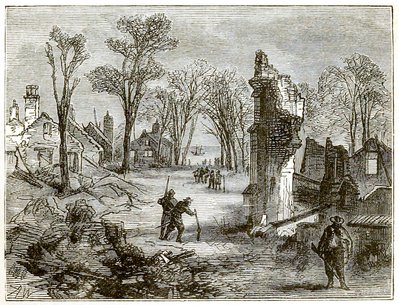The Legacy of Bacon’s Rebellion
The Aftermath
Bacon’s Rebellion was the most serious challenge to royal authority before the American Revolution. However, historians also consider it the reason for the decline of indentured servitude and the rise of slavery within the colonies.
Bacon’s support came largely from workers rather than landowners. Workers’ desires for their own lands meant they wanted to settle in territories reserved by treaty for Indigenous peoples. Many also sought to escape from the bonds of indentured servitude. Landowners came to fear further rebellion by white indentured servants. At the same time, British immigration to Virginia began to slow.
As a result, over the next 20 years, landowners moved toward a system of race-based slavery. By 1700, the slave population had soared and new laws were passed that further limited the rights of enslaved peoples of African descent.

An 1878 illustration depicting Jamestown after Bacon’s Rebellion.
One of the primary legacies of Bacon's Rebellion, therefore, is the system of racial divisions that emerged after the rebellion. As former white indentured servants gained more rights, a sense of “racial virtue” emerged for white Virginians, both rich and poor, in common opposition to the interests of the local Indigenous populations and enslaved or free Black Virginians. This prevented a coalition of Black and white workers that might have been capable of mounting an effective challenge to the political system and demanding a more equal and just society.

